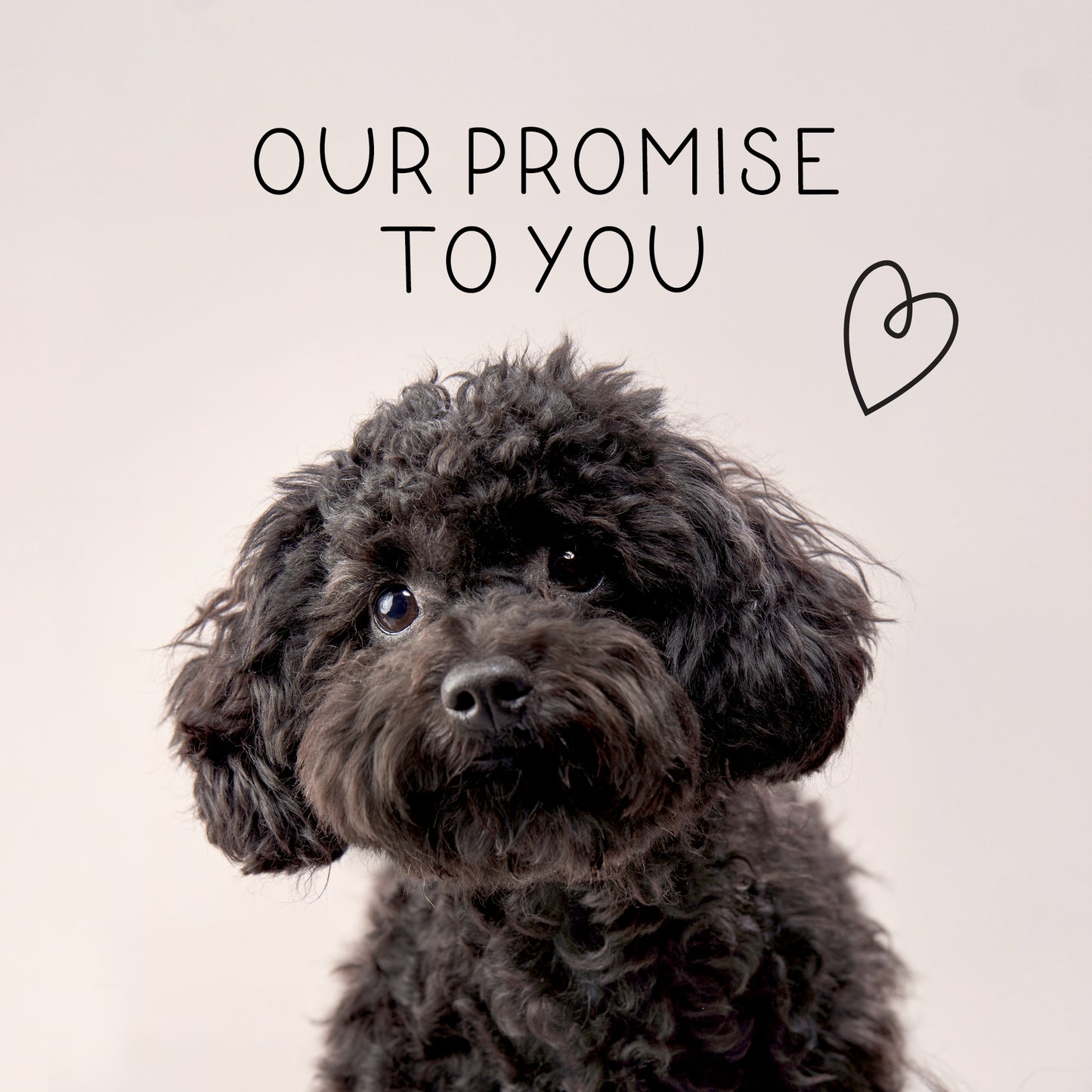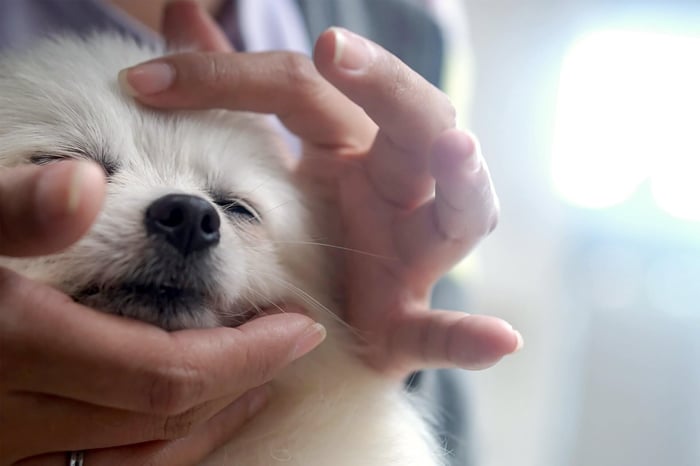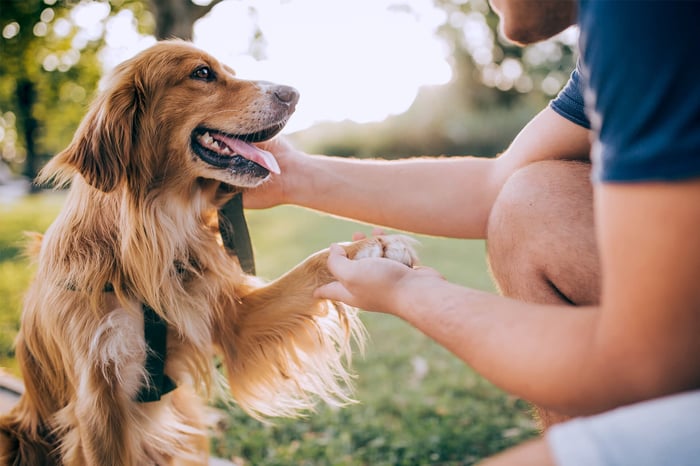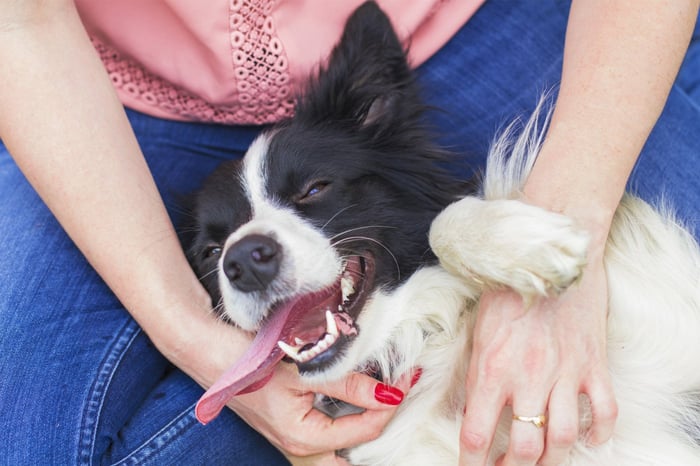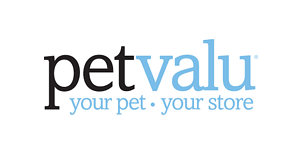Summer often brings a change in rhythm—more time outdoors, later nights, and extra cuddles at home. But as school starts and schedules tighten up, dogs can feel the shift too. After weeks of flexibility and constant company, the transition back to routine can be a bit of a shock for your pup.
At Crumps’ Naturals, we believe every dog deserves support through life’s transitions—big or small. Whether it’s adjusting to longer days alone, new mealtimes, or less spontaneous play, there are simple, gentle ways to help your pup settle back into a structured routine with comfort and confidence.
Why Routines Matter for Dogs
Dogs thrive on consistency. Having predictable routines help them feel safe, secure, and in control of their environment. Sudden changes in schedule—especially after a relaxed summer—can lead to signs of stress such as:
- Restlessness or pacing
- Clingy or anxious behaviour
- Barking or whining
- Appetite changes
- Accidents in the house
Helping your dog gradually get back to routine can ease this adjustment period and support their physical and emotional well-being.
8 Gentle Ways to Support Your Dog’s Transition
1. Shift Back to Routine Slowly
Start adjusting your dog’s daily schedule about 1–2 weeks before things change.
- Gradually move mealtimes, walk times, and bedtime back to your regular routine by 15–30 minutes each day.
- If your dog is used to extra attention, begin introducing short periods of alone time throughout the day.
These small changes over time are easier for dogs to process than abrupt shifts.
2. Reinforce Predictable Morning and Evening Rituals
Dogs find comfort in repeated activities, especially during high-energy times like the morning and bedtime.
- Begin the day with a short walk followed by breakfast to help burn off energy and give them structure.
- In the evening, keep things calm and consistent: a potty break, a relaxing play session, and a dental-friendly treat like Plaque Busters help wind things down.
3. Build Confidence with Short Alone-Time Sessions
If your dog has been glued to your side all summer, time alone may feel unfamiliar.
- Leave for 10–15 minutes at a time and gradually increase your absence.
- Offer a safe chew like Sweet Potato Chews or a frozen enrichment toy with peanut butter and crushed Apple Bites to keep them engaged.
- Avoid dramatic goodbyes—staying calm helps signal to your dog that everything is okay.
4. Enrich Their Day with Mental Activities
Fewer outdoor adventures doesn’t mean less stimulation. Keep their mind busy indoors:
- Try food puzzles or slow feeders to turn meals into enrichment.
- Hide Balance Bites around the house and let your dog sniff them out.
- Practice basic cues or fun tricks for short training sessions that double as bonding time.
5. Maintain Physical Exercise in New Ways
Fewer outdoor adventures don’t have to mean less stimulation. Keep their mind busy indoors:
- Try shorter, more frequent walks during busy weeks.
- Incorporate indoor play: tug, fetch, or short stair climbs help burn energy.
- On weekends, explore new trails or parks to keep things fun.
Even 15–20 minutes of play can do wonders for their mood and behaviour.
6. Support Gut Health and Mood Naturally
Schedule changes can affect digestion and emotional balance. That’s why supporting their gut and mood during the back to routine transition can make a big difference and functional treats help:
- Gutsy Balance Bites offer prebiotics and pumpkin to support a healthy gut—ideal during times of transition.
- For dogs that seem extra anxious or unsettled, Calm Bites contain fermented yeast and adaptogens like ashwagandha to support mood and calmness.
These small additions to your dog’s day can make a big difference in how they feel from the inside out.
7. Stick to Mealtime Consistency
Feed your dog at the same times every day. This anchors their routine and helps reduce stress.
- Use a scheduled feeder if your routine is unpredictable.
- Add a frozen broth cube with a piece of Jerky as a topper for hydration and extra enrichment.
- Save a favourite treat—like Venison Jerky with Chia—for post-meal rewards or quiet time.
8. Be Patient with the Process
Every dog adjusts at their own pace. It’s normal to see temporary behaviour changes as they adapt to a new rhythm. Offer gentle reassurance, positive reinforcement, and lots of praise when they do well.
If your dog is really struggling, reach out to a certified trainer or your vet for support—it’s okay to ask for help.
Final Thoughts
Getting back to routine after summer break doesn’t have to be hard on your dog. With a little preparation, thoughtful enrichment, and natural support, you can help your pup feel settled, confident, and cared for.
From gut-healthy treats to calming routines, every moment is an opportunity to support your dog’s physical and emotional well-being. Because the transition doesn’t just mark the end of summer—it’s a chance to build structure, trust, and even deeper connection.
Explore Crumps’ Naturals’ full line of functional treats, single-ingredient chews, and dental solutions to help make this season feel a little easier—and a lot more rewarding.




